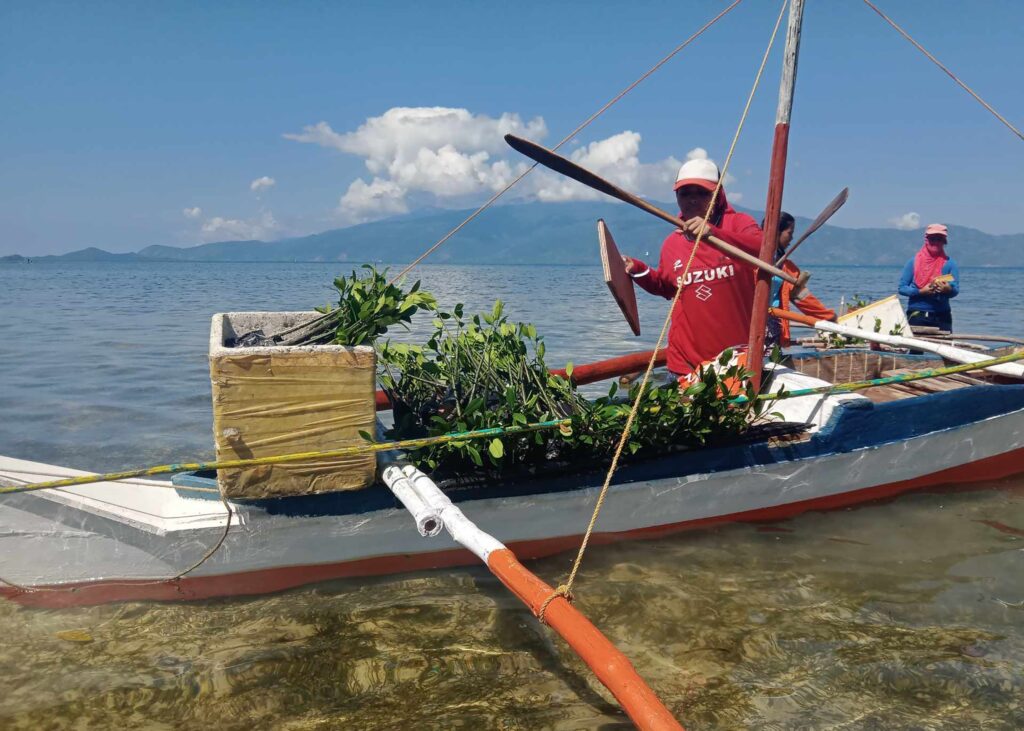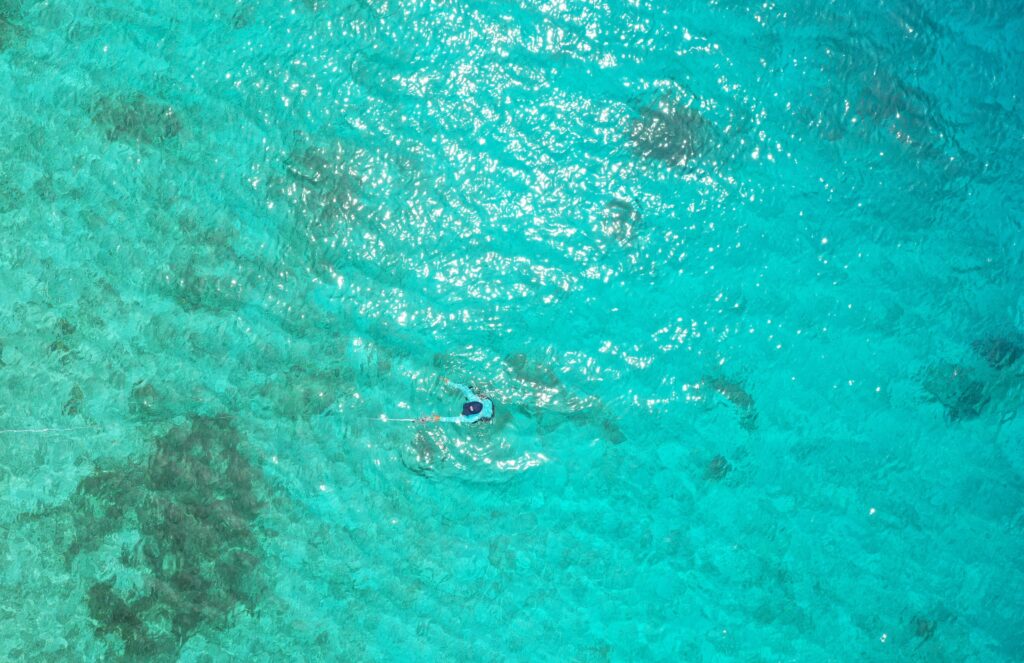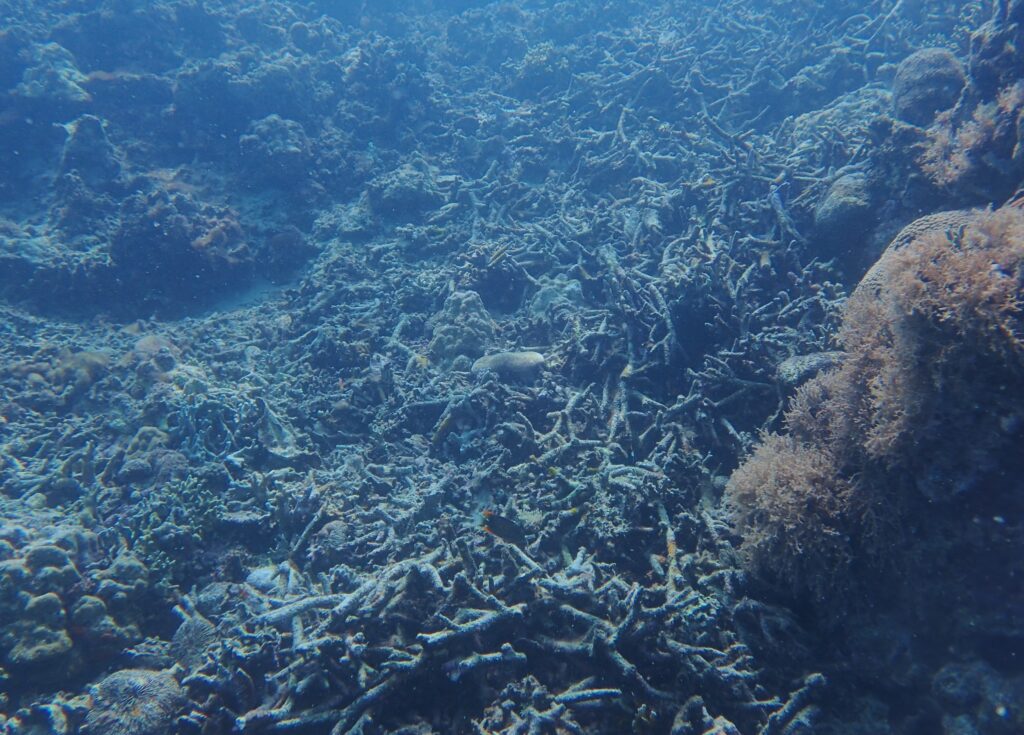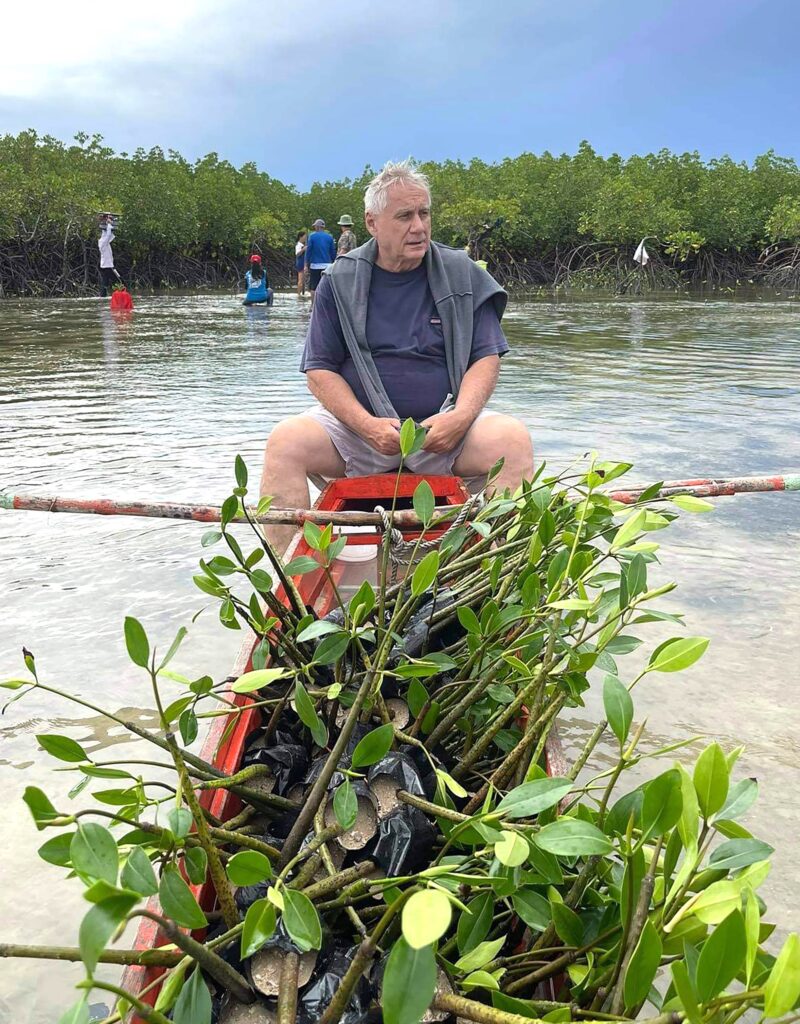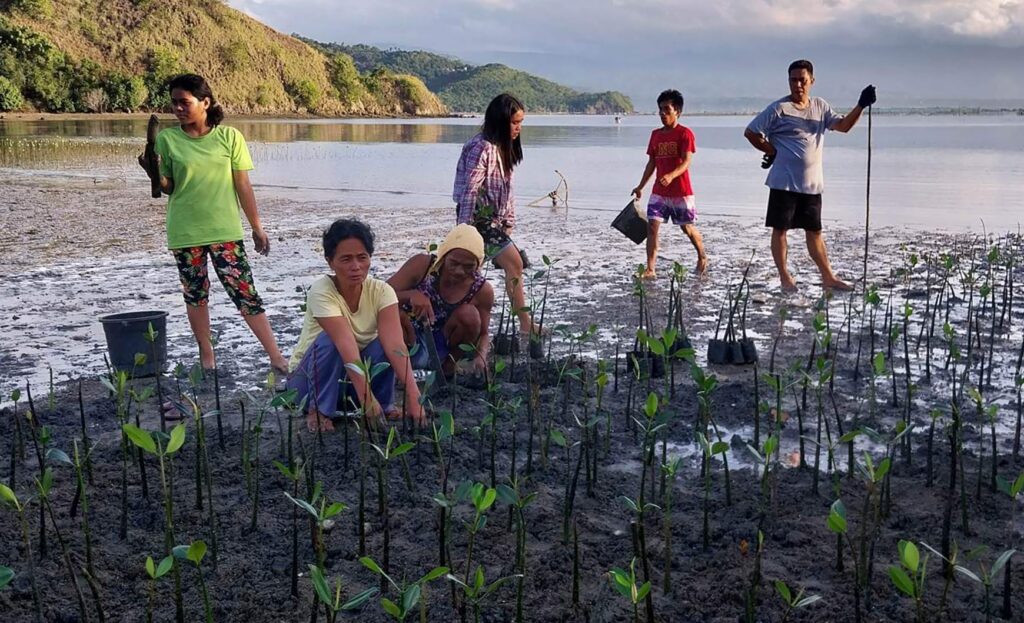By Henrylito D. Tacio
Mati City in Davao Oriental is known for its three bays – Pujada, Mayo and Balite. Of the three, Pujada stands out. “Pujada Bay is almost a virgin paradise,” said Bruno Bodard, founder and manager of the Most Beautiful Bays in the World Organization. “It is much more beautiful than we expected. The Philippines is a very nice country. You have the jewel in Pujada.”
Guy Rousset, the club treasurer who accompanied Bodard for the validation, told Philippine Daily Inquirer of Pujada Bay: “This place beguiles and inspires, sedates and stirs, where the distance between heaven and earth collapses and you will be able to catch glimpses of the divine or the infinite as you are united with nature.”
Unfortunately, some parts of the bay are not in good condition. “They need to be protected because corals have been affected by overfishing,” said Francisco Juan Diaz Martinez, a foreign diver from Buceo An Cabo de Gata company. “Within five years, you can bring back the beauty of the ecosystem in Pujada Bay.”
Collaborative effort
Four international organizations are very much aware of the current situation in Mati City. This is the reason why Team Malizia, Zurich Germany, rrreefs, and the Mama Earth Foundation are teaming together to restore the destroyed coral reefs but also reforest the vanishing mangrove forests in the city.
The collaboration is in connection with the Planet Hero Award, which is given annually by Zurich Insurance for climate-promoting initiatives as part of the partnership with Team Malizia.
Zurich Insurance is the first insurance provider which committed itself to complying with the international agreement to limit the planet’s warming to 1.5 degrees. It created the Planet Hero Award for forward-looking projects that aim to improve environmental and climate protection.
Team Malizia, on the other hand, is a professional offshore sailing team led by German sailor Boris Herrmann. The team’s mission goes beyond competitive sailing; through its A Race We Must Win – Climate Action Now! mission, it is committed to taking action against climate change and raising awareness on Ocean protection and the climate crisis.
The rrreefs is the first recipient of the Planet Hero Award. The female-founded startup based in Switzerland that rebuilds damaged coral reefs was given the award in 2021. The university spin-off has developed a unique system of interlocking 3D-printed clay bricks that has been tested for two years in the Caribbean, achieving very high fish diversity and coral settlement. The rrreefs’ vision is to restore 1% of all coral reefs on coastlines by 2034.
The Mama Earth Foundation was founded by German national Ulrich Kronberg more than 10 years ago. It has been involved in land and coastal reforestation projects in Mindanao. Working closely with the coastal communities, the local university in Mati and the authorities, Mama Earth Foundation has established programs for farmers to help them secure their income base and prevent them from being forced to illegally cut down trees due to financial hardship.
“Sharing a common mission to act for ocean health and against the climate crisis, these partners have already been working together in different capacities geared towards climate action and environmental conservation,” said a press statement which this author obtained.
Now, the four groups are joining forces, combining their collective expertise and resources for this significant and long-term project aimed at regenerating degraded marine ecosystems in Pujada Bay.
Coral reef status
The country’s fragile coral reefs are on the verge of extinction. But despite this, they are not getting the attention they deserve.
Right now, there is a lack of updated information on the present status of our coral reefs. The most recent study – the Nationwide Assessment of Philippine Coral Reefs – was published in the Philippine Journal of Science in 2017.
“Reefs sampled (in the study) were randomly selected from around the country, with the number of assessment stations for each of six biogeographic regions stratified by the total area of reefs in each of these regions,” wrote Rosemarie C. Señora in S&T Post, the quarterly publication of the Department of Science and Technology (DOST). “For two years, 166 reefs have been sampled.”
Based on live coral cover, more than 90% of the sampled reefs are in the “poor” and “fair” categories. “So far, the mean hard coral cover of the country at 22% is comparable with that of the Indo-Pacific region, but much lower than previous estimates for the Philippines,” Señora noted.
Mangrove situation
Meanwhile, almost half of the country’s remaining mangroves were lost over the past years: from 500,000 in 1918 to 240,824 in 2010, according to Dr. Severino Salmo III, an associate professor at the University of the Philippines Diliman Institute of Biology.
This is bad news for fishers and those living near the coastal areas. The Philippines is among the most vulnerable countries in the world to flood damage from typhoons and extreme events. It must be recalled that when Typhoon Yolanda hit the Philippines in 2013, more than 6,000 people died and over $2 billion in damages were reported.
“We need to complement conservation, limit the mangrove losses that are on the conservation side,” Dr. Salmo said. “But it is no longer enough to provide protection against typhoons. We really need to come up with a strategic restoration program.”
Kronberg readily agrees. “Coastal ecosystems like mangroves and coral reefs play key roles for our climate and the environment,” explained the German nation who now calls Davao City as his second home, having stayed in the country for almost a decade now.
“Mangroves are champions at capturing carbon dioxide and form a buffer against coastal erosion and storm damage, whilst healthy coral reefs can absorb wave energy and are home to nearly a quarter of the oceans’ biodiversity,” he pointed out. “The regeneration of both ecosystems helps them to better withstand and recover from storms and the effects of climate change.”
Reviving Pujada Bay
The four organizations are working together in a project located in Pujada Bay, where Boris Herrmann’s Team Malizia and the Mama Earth Foundation have been actively involved in restoring the mangrove ecosystem for many years through the creation of the Malizia Mangrove Park.
“Working in collaboration with the local university and with a mission to provide a better income for local communities, we have already planted over 800,000 mangrove seedlings,” Kronberg says. “Our objective is to reduce carbon dioxide levels by binding large quantities of carbon dioxide from the atmosphere.”
According to Kronberg, Pujada Bay was declared a marine protected area in 1994. “It is also an ideal location for the restoration of both mangroves and coral reefs together,” he says.
Doing so, he adds, can bring additional benefits for both the mangroves and the reefs. “The increased biodiversity of the reefs may help young mangroves store more carbon, and in turn the mangroves may help the regenerated reef by decreasing ambient water temperature and sediment in the water,” he says.
For this project, the rrreefs will rebuild a damaged coral reef, using their modular system made from 3D-printed clay bricks. The system provides a foundation for corals to grow and fish to thrive and enables the regrowth of a healthy reef ecosystem without further maintenance.
In like manner, about 3000 mangroves will be planted in front of the restored reef, and another 3000 mangroves in front of a degraded reef that will not be restored. “This experimental approach provides an opportunity to understand the potential benefits of simultaneous restoration of mangroves and coral reefs,” Kronberg says.
Environmental aspects
Among those that will be studied are the following: Does rebuilding the reef achieve a higher biodiversity in the mangroves than without the reef, or with a destroyed reef? Can the reef contribute to the mangrove forest absorbing more carbon dioxide than it would otherwise?
In addition to the environmental aspects, the creation of positive social impact plays an important role for the project partners. Academicians and students from Davao Oriental State University in Mati are actively involved in all steps of the project, and the teams work with local communities along the coast, as their participation is crucial for the success and long-term sustainability of the restoration efforts.
“It is amazing to see how our various efforts and partnership network are coming together to rehabilitate two ecosystems that are crucial for our planet,” said Team Malizia’s skipper Boris Herrmann. “As a sailing team, the ocean is our home, our workplace but we all depend on the ocean, and it is threatened by climate change. From contributing to scientific research to community building, and to local environmental restoration efforts: This project represents our shared commitment to preserve our ocean…”
Carsten Schildknecht, CEO of Zurich Germany, also said, “The ‘Reviving Pujada Bay’ project is an impressive example of the positive impacts that result from the Planet Hero Award. We not only honor promising innovative and effective environmental and climate initiatives as part of our sustainability strategy, but we have also established a platform for communication, networking and collaboration. The interplay between science, environmental protection and social commitment has the potential to lead the way for other initiatives.” – ###
Photos courtesy of Ulrich Kronberg

